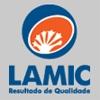Explore all the information on
Mycotoxins
Welcome to the page about Mycotoxins of Engormix; a source of knowledge on Mycotoxins.
Swamy Haladi (Trouw Nutrition) discusses the critical impact of mycotoxins on gut health and food safety at OVUM 2024. Learn how toxins like DON and Fumonisins compromise gut barriers, enabling pathogens to affect poultry performance and product quality. Swami also shares holistic strategies for managing mycotoxins, from grain storage to advanced binders...
Comments : 0
Recommendations: 0
1. Introduction Aflatoxin contamination in foods, as well as in livestock and poultry feeds, is a major global concern due to its carcinogenic and immunosuppressive properties [1,2]. The ingestion of an aflatoxin-contaminated diet can lead to acute and chronic aflatoxicosis in both humans and animals. Chronic aflatoxicosis can result in hepatocellular carcinoma, cirrhosis, and impaired immunity. Acute aflatoxicosis is characterized by symptoms like high fever, vomiting, liver...
Comments : 0
Recommendations: 0
.jpg&w=3840&q=75)

All-in-one mycotoxin extraction method for faster time-to-results - Myco 5-in-1 PLUS
Suggested link
1. Introduction Corn ranks among the most globally cultivated cereals, with the production of more than 1200 million tons in the 2022/2023 harvest, mainly concentrated in the United States, China, and Brazil [1]. In Brazil, corn is the second most produced grain, following soybeans. For the 2023/2024 harvest, the estimated production in Brazil will exceed 118 million tons [2]. In the Brazilian market, the diversity of corn cultivars is substantial, whereby 98, 259, and 98...
Comments : 0
Recommendations: 0
This study was investigating the effects of a defined concentration of Fusarium mycotoxins, deoxynivalenol (DON) and zearalenone (ZON) incorporated into feeds on growth performance of pigs and the alleviating effects of a mycotoxin degrading enzyme (MDE) on the toxicity of Fusarium mycotoxins. A total of 48 weaning pigs was randomly allotted to four treatments for a 6-week challenged trial. The MDE product was a kind of mycotoxin degradation enzyme with esterase, epoxidase and...
Comments : 11
Recommendations: 0
Mycotoxins are produced by fungi and can lead to sickness in humans and animals, which explains why testing for them in crops, feeds, and food products is so important and is often a regulatory and customer requirement. Fortunately, testing technologies have evolved from slow, tedious, and complicated to smart, fast, and data connected. Tests vary in their performance capabilities and suitability for field, process, or lab environments. With a number of different options, you may be...
Comments : 1
Recommendations: 0
1. Introduction Fungi are major pathogens for plants, causing significant economic losses. Fungal infestation of crops at the pre- and post-harvest stages is also a risk for animal health, as they produce secondary metabolites with a wide range of biological activities; some are severely toxic to humans and animals. These toxic metabolites are commonly denoted mycotoxins, and their adverse health effects are described as mycotoxicosis to differentiate their pathogenesis...
Comments : 0
Recommendations: 0
.jpg&w=3840&q=75)

All-in-one mycotoxin extraction method for faster time-to-results - Myco 5-in-1 PLUS
Suggested link
Introduction Mycotoxins are secondary metabolites in certain molds that grow in raw material feed or commercial feed [1]. Mycotoxins have been reported to cause economic loss, disease in livestock and humans, and even death [2]. Five mycotoxins, aflatoxin, fumonisin, ochratoxin, trichothecene and zearalenone, have been reported to be dangerous to the body. Aflatoxins and ochratoxins are examples of mycotoxins whose toxicity levels are higher than others [3]. Aflatoxins and...
Comments : 0
Recommendations: 0
The continuous pursuit of a sustainable food system remains a global priority, with increased food security and minimization of postharvest loss as primary objectives. This is a critical issue, as recent estimates from the Food and Agriculture Organization (FAO) Reports on the State of Food Security and Nutrition in the World 2023 indicate that hunger affected a staggering number of individuals ranging from approximately 691 million to 783 million people in 2022, with an approximate midrange...
Comments : 0
Recommendations: 1
1 - INTRODUCTION Fusarium graminearum (teleomorph Gibberella zeae) is an ascomycete fungal pathogen and the main causative agent of Fusarium head blight (FHB), or scab disease, on wheat. F. graminearum infects wheat floral tissues at flowering (anthesis), secreting many cell wall-degrading enzymes (CWDEs), other proteins and metabolites as well as mycotoxins that contaminate the developing grain, rendering it unsuitable for both human and livestock consumption (McMullen et al.,...
Comments : 0
Recommendations: 0
Don Giesting (Cargill) discussed the combined effects of mycotoxins on animal health, during this Swine It interview with host Laura Greiner....
Comments : 1
Recommendations: 0
.jpg&w=3840&q=75)

All-in-one mycotoxin extraction method for faster time-to-results - Myco 5-in-1 PLUS
Suggested link
Introduction Mycotoxins are secondary metabolites produced by filamentous fungi of Aspergillus, Fusarium and Penicillium species (31). These toxic metabolites are often found in grains and a substantial percentage of animal feed (18). The most common mycotoxins harmful to animal health are aflatoxin B1 (AFL B1), zearalenone (ZEN), deoxynivalenol (DON), fumonisins B1 and B2 (FB1 and FB2), ochratoxin (OTA) and T-2 toxin (T-2) (6). Different mycotoxins induce different effects on animal...
Comments : 0
Recommendations: 0
Introduction Wheat grains are important staple foods consumed worldwide. They are used as animal feeds, ingredients in food processing, or in the brewing industries (Giraldo et al. 2019). However, pre-and post-harvest colonisation by mycotoxigenic fungi and mycotoxins can occur depending on pre-harvest weather conditions and whether effective drying regimes have been applied for safe storage (Aldred and Magan 2004). Fusarium graminearum is predominantly responsible for...
Comments : 0
Recommendations: 0
INTRODUCTION Aflatoxin Testing in Changing Times: The Context at a Glance As toxic contaminants of very high concern, aflatoxins stand out as a key area of focus in today’s food safety testing arena. The issues surrounding the rising importance of accurate, defensible aflatoxin test results are numerous and complex. Chief among them are a growing public awareness of the health and economic implications of foodborne toxins, the increasing globalization of the...
Comments : 0
Recommendations: 0
INTRODUCTION A Rising Call To Action As government-mandated and industry-driven hazard identification and prevention efforts become standard operating procedure for an expanding cross-section of the global feed industry, the need of its diverse stakeholders for fast, easy, cost-effective access to reliable aflatoxin data continues to intensify. Recognition of aflatoxins as a chemical hazard of very high concern spans the gamut of national and international...
Comments : 0
Recommendations: 0
.jpg&w=3840&q=75)

All-in-one mycotoxin extraction method for faster time-to-results - Myco 5-in-1 PLUS
Suggested link
Introduction: Claw lesions in piglets are common. The neonatal claw is sensible for factors such as floor temperature and roughness, and possible residuals from disinfectants. Also selenium (Se) intoxication and ergot alkaloids have been related to claw lesions. The present case describes the occurrence of hemorrhagic claw lesions in neonatal piglets of a commercial farrow-to-finish pig herd in Flanders. Materials and Methods: The herd consisted of 270 JSR...
Comments : 0
Recommendations: 0
I. INTRODUCTION Mycotoxins are secondary metabolites produced by fungi (fusarium, aspergillus, penicillium mainly) that can cause serious health problems in poultry and may result in severe economic losses. They can exert negative impact on both performance (Kolawole et al, 2020) and intestinal health (Antonissen et al, 2014) depending on the type of mycotoxin, extent of exposure, its concentration, the age of the animals and their health status. Mycotoxins can also be a predisposing...
Comments : 0
Recommendations: 1
Introduction Fusarium graminearum is the causal agent of Fusarium Head Blight (FHB) in wheat and barley [1]. It is considered a major global threat that impacted great economic losses on the cereal industry because of reduced grain yield and grain quality. FHB can also cause contamination of crops and grains with diverse mycotoxins, including deoxynivalenol (DON) and zearalenone, which are harmful for humans and animals [2, 3]. FHB has severe impacts on grain yield,...
Comments : 0
Recommendations: 0
Introduction Fusarium graminearum is a globally important pathogen causing Fusarium head blight (FHB), a devastating disease of cereals worldwide which can be caused by several Fusarium spp. The pathogen has biotrophic and necrotrophic (saprophytic) growth phases [1] that require adaptation to different environments like soils, plant debris, and living plants. The fungus is responsible for yield losses and contamination of the grains with mycotoxins; mainly deoxynivalenol (DON)...
Comments : 0
Recommendations: 0
.jpg&w=3840&q=75)

All-in-one mycotoxin extraction method for faster time-to-results - Myco 5-in-1 PLUS
Suggested link
Introduction Aflatoxin is a secondary metabolite produced by Aspergillus flavus and Aspergillus parasiticus, and is a highly toxic natural pollutant widely present in feed in humid and hot areas [1, 2]. Among the 12 aflatoxin derivatives detected, the most toxic and carcinogenic aflatoxin B1 (AFB1) is the most common, with significant toxicity to the liver and other organs of animals [3]. In recent years, aflatoxin pollution has caused huge economic losses to breeding...
Comments : 0
Recommendations: 0
Introduction Diseases caused by fungi are among the most harmful to plants due to their rapid spread and the ability to adapt to various environmental conditions [1]. The most commonly used methods for the control of plant diseases caused by fungi include the use of chemical fungicides [1, 2], which have disadvantages such as the potential risk of soil and water contamination, damage to human health, and the development of resistance against fungicides by plant pathogens [2,...
Comments : 0
Recommendations: 0











